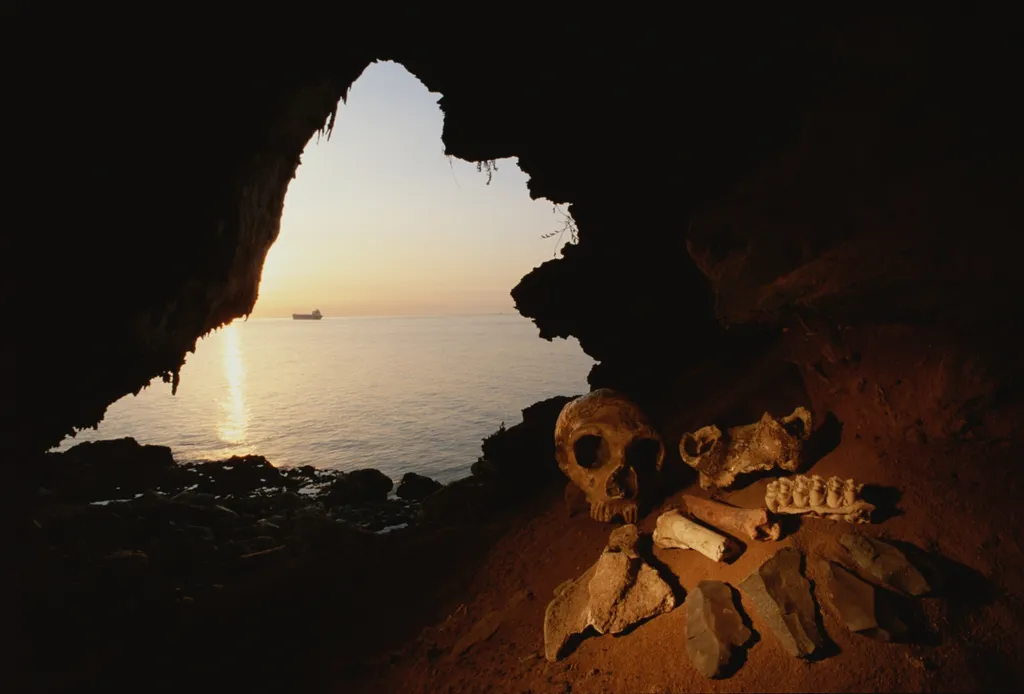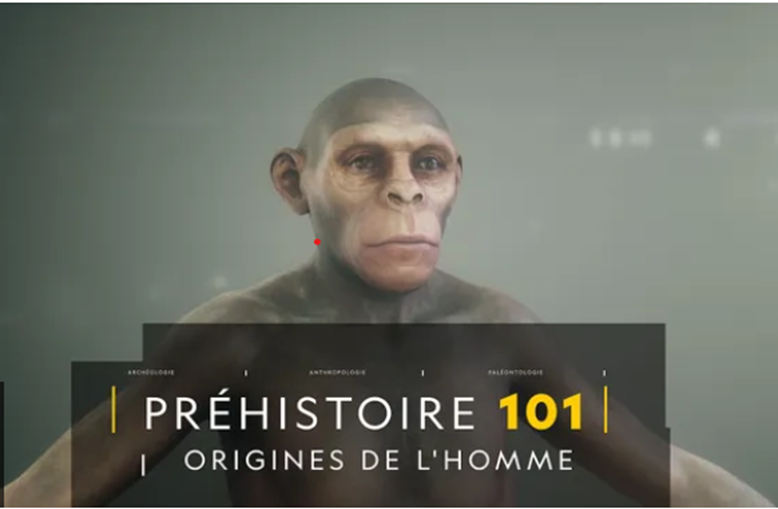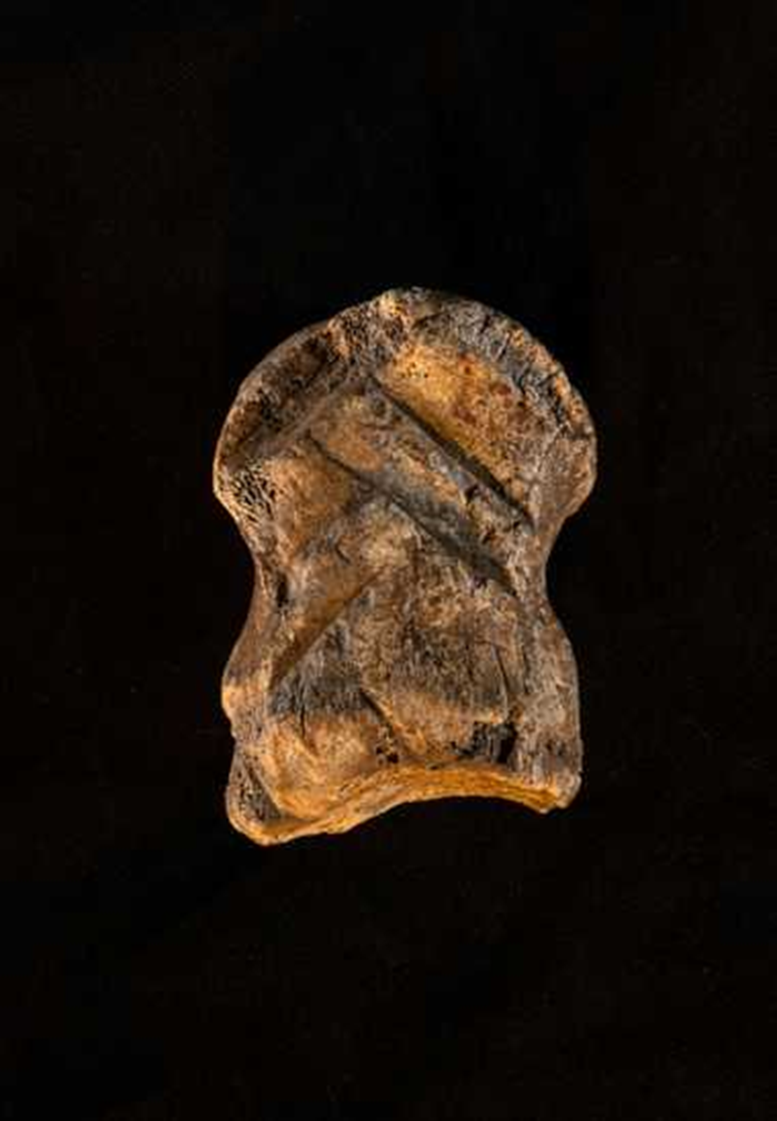?Who were the Neanderthals really

This portrait of a Neanderthal woman was reconstructed using DNA data. Neanderthals resembled modern humans, with a prominence of the supraorbital rim, wide dentition and large eyes. They would also have been smarter than the research so far suggested.
Extinct nearly 40,000 years ago, these ancient hominids were once reduced to the status of thugs, but recent discoveries suggest a closer kinship with our species.
In 1856, when workers at a quarry in the Neander Valley in Germany came across a set of fossilized bones, they thought they had unearthed the skeleton of a bear. They are unaware that their discovery is about to change the course of history: the traces of an ancestor of Man who disappeared nearly 40,000 years ago.
It won't take researchers long to realize that they have already crossed paths with this species through fossils unearthed during the 19th century, but misidentified. The discovery gave new impetus to scientists eager to explore new evolutionary theories, sparking a veritable hunt for fossils around the world and captivating the general public with the idea of a mysterious related species that once ruled the planet. Europe.
Baptized Homo neanderthalensis by geologist William King in 1864, Neanderthals remain our closest relatives to this day. Here's what there is to know about these human ancestors, from how they lived to the conditions that caused their downfall.

The skull of a Neanderthal woman on display along with other remains discovered in Gorham's Cave. Located east of the Rock of Gibraltar, this archaeological site has provided important information about the life of Neanderthals.
?WHAT DID THEY LOOK LIKE
At first glance, the fossilized bones of Neanderthals would appear almost human. There are, however, a few characteristics that differentiate this extinct species from modern Homo sapiens .
In addition to their resemblance to humans, Neanderthals had a prominence of the supra-orbital rim, wide dentition and large eyes. According to the researchers, they had a brain similar in size to ours, with a more elongated shape. Although the size and structure of Neanderthal brains are still debated, it is now accepted that the average Neanderthal measured between 164 and 168 centimeters for men, and between 152 and 156 cm for women.
These hominids once lived across Eurasia. According to scientists , Neanderthals would have developed a compact and massive musculature to adapt to the relatively cold climates of the region. Under these conditions, their survival would have required a diet of 4,480 calories per day.

The life of the Neanderthal was essentially punctuated by the hunting of mammoths, elephants and woolly rhinos or other representatives of the megafauna. Our ancestors lived and traveled in groups, they used various tools including spears to satisfy their meat rich diet. They also ate plants, a sign that Neanderthals "probably ate what was within reach depending on the situation, season, and climate," as Ainara Sistiaga, a geobiologist at the Massachusetts Institute of Technology , suggests ( MIT), in the United States.
Sometimes that also meant setting their sights on their own kin. In 2016, a team of scientists studying Neanderthal bones in a Belgian cave discovered the “evidence clearly attesting to the practice of cannibalism among Neanderthals in northern Europe. »
?WERE THEY SMART
Originally, researchers assumed that Neanderthals were gross brutes with rudimentary intelligence and a serious penchant for bloodthirsty hunting. However, faced with the accumulation of evidence demonstrating surprisingly human characteristics, some researchers have ended up changing their minds on the question.
Neanderthals used tools in hunting or in a domestic context. They cut stones to create weapons, scrapers or axes. Woodworking was also widespread , especially to make spears or tools for digging.

Neanderthals used materials like flint to make weapons, axes and more. This specimen comes from the Pinilla del Valle site, in the Lozoya Valley near Madrid, Spain. Several objects attributed to Neanderthals have been discovered at this site since excavations began in the 2000s.

This deer bone fragment carved with curved lines suggests that Neanderthals were able to express some creativity.
Neanderthals are also said to have used animal skins to create clothing that could cover up to 80% of their bodies . Like humans, they also covered their feet and other sensitive body parts, but since the clothing did not stand the test of time, researchers can only speculate on how they were getting dressed.
Another major discovery: the Neanderthals were capable of symbolic thought, as evidenced by the decorated eagle knuckles unearthed at certain archaeological sites, as well as other objects probably used during funerary rituals, as much evidence, according to some, of the existence of an advanced form of thought and tradition. Then, in 2018, researchers announced the discovery of cave paintings, the oldest of their kind, dating back 65,000 years. However, the abstract nature of the work continues to fuel debate within the scientific community about the true mental abilities of Neanderthals.
?WHY HAVE THEY DISAPPEARED
Either way, Neanderthals met a doomed fate, and their extinction is just as controversial as other aspects of their lives. Scientists still wonder about the conditions that led to the species' disappearance around 40,000 years ago.
Researchers are aware of a few cases of coexistence and sometimes even mating between Homo neanderthalensis and Homo sapiens , which appeared in Africa around 300,000 years ago. This mixing of species implies that some modern humans descended from Neanderthals, although humans eventually won the genetic battle. According to some scientists, the extinction of Neanderthals was the result of competition with humans for food and habitat , or the natural selection of advantageous human traits. For others, Neanderthals would have ended up being in the minority compared to humans because of their tendency to live in small groups.
A third hypothesis involves climate change: Scientists have documented a cold spell coinciding with the extinction of Neanderthals around 40,000 years ago. For almost a thousand years, the phenomenon would have plunged Central Europe into a climate capable of decimating the species. The impact would have been less severe in regions populated by Homo sapiens and, according to the proponents of this theory, humans would then have invaded the regions formerly populated by Neanderthals to become the dominant species throughout the world.
Then comes the theory of weapons: the first humans would have defeated the Neanderthals because they were simply better armed.

Cave paintings left by Neanderthals 65,000 years ago in Ardales Cave, Andalusia. Researchers have found such paintings in three Spanish caves, including this one.
NEANDERTAL DNA
Despite their species collapse, fascinating traces of Neanderthals remain in the genetic makeup of some modern humans. Up to 4% of the DNA of humans without African ancestry can be linked to Neanderthals, supporting the thesis of mating between the two species.
“Ironically, given the current estimated world population of 8 billion, there has never been so much Neanderthal DNA on Earth,” reads an article by Peter C. Kjærgaard, Mark Maslin and Trine Kellberg Nielsen, three specialists in prehistory.
It's been so long since Neanderthal Man trod Eurasia that it's now impossible to answer all our questions with certainty. Despite this, the mystery surrounding these human ancestors and the fascinating prospect of proximity to our species continue to this day to fuel research… and controversy.
Source : websites

